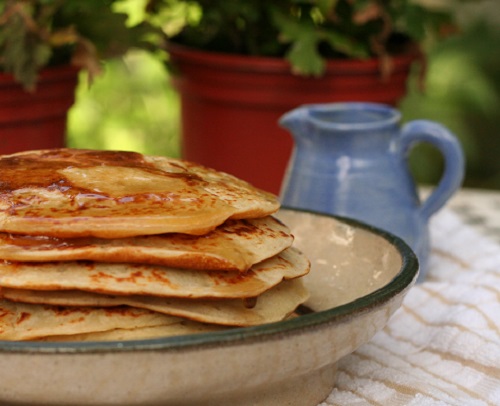I’ve
been having a bad week in my kitchen – you know the kind of week where nothing
quite goes as expected. The worst was my attempt at making chocolate
caramels. They turned out fine - dark, chewy, and very, very
moreish. However in the process of getting the mixture up to temperature, I
enamelled my favourite stainless steel saucepan. It has taken a week of
inventiveness and ingenuity to remove the shiny black sugar coating from
the metal. I believe I have invented a substance that NASA might want to
consider for tiling the space shuttle.
Moving
swiftly on... imagine it is a perfect Halloween evening – wild and stormy. There’s a
log fire blazing and an open bottle of wine on the mantelpiece.
On the menu: corned beef with colcannon. The corned
beef is a cinch to cook. Rinse it, weigh it and pop it in a pot just large
enough to take it and a few ancillary vegetables. Add an onion and sprinkle in
a large pinch of ground cloves. Bring it to the boil, then cover and turn the
heat down to a gentle bubble, giving it 25 – 30 minutes per pound/half
kilo. The piece I’m cooking is 1.5kg or about 3lb and will take an
hour and a half. I’ll fling a few carrots in to the pot about half an hour before
the meat is finished cooking. Really, the meat is just an excuse to make its
perfect partner – a dish of butter, peppery colcannon (cál ceannann).
As
a conscientious objector to cabbage, I astound myself with my devotion to
colcannon – which is essentially buttery mashed potato mixed with finely
chopped curly kale (fancy cabbage, but cabbage all the same). Traditionally
eaten at Halloween, I shamelessly sneak it into meals whenever I can find kale.
About
fifteen minutes before the beef is finished cooking, prepare the colcannon.
For
4 people, you will need...
4
– 6 potatoes (I use Rooster – a good, floury potato)
50g Irish butter
110
mls hot milk
a
large pinch sea salt
white
pepper to taste
200g
curly kale (or leafy green cabbage)
4
spring onions (scallions) finely chopped
An
optional extra 50g butter to bury in the mash
Method
1 Peel the potatoes and cut into slice about ½
cm thick. Place in a saucepan and barely cover with cold water. Bring to the
boil. Turn down the heat to simmering, cover and simmer gently for 15 minutes,
or until the point of a knife easily pierces the potato slices.
2 While the potato is cooking, add the curly
kale (or green cabbage) to another saucepan of boiling water with a teaspoon of
salt. Cover and boil for about 5 minutes or until tender. Drain and chop very
finely.
3 When the potatoes are cooked, drain the
water from the saucepan and leave the potatoes uncovered for a minute or so
until most of the steam has evaporated. Add the butter and hot milk and, using
a potato masher or a sturdy hand-held whisk, reduce the potato to a smooth
mash. (Don’t be tempted to go mechanical as it overworks the potato and can
result in an unpleasant gluey mess). Add salt and white pepper, mixing
thoroughly. Taste and add further salt and pepper if necessary.
4 When you have prepared the basic mash, add in the curly kale or cabbage and chopped spring onions. Transfer to a warm serving dish with the optional extra 50g of butter cut into three pieces and buried deep in the fluffy mixture to melt into little pools of gold.
((f(First published Oct 2010)

































